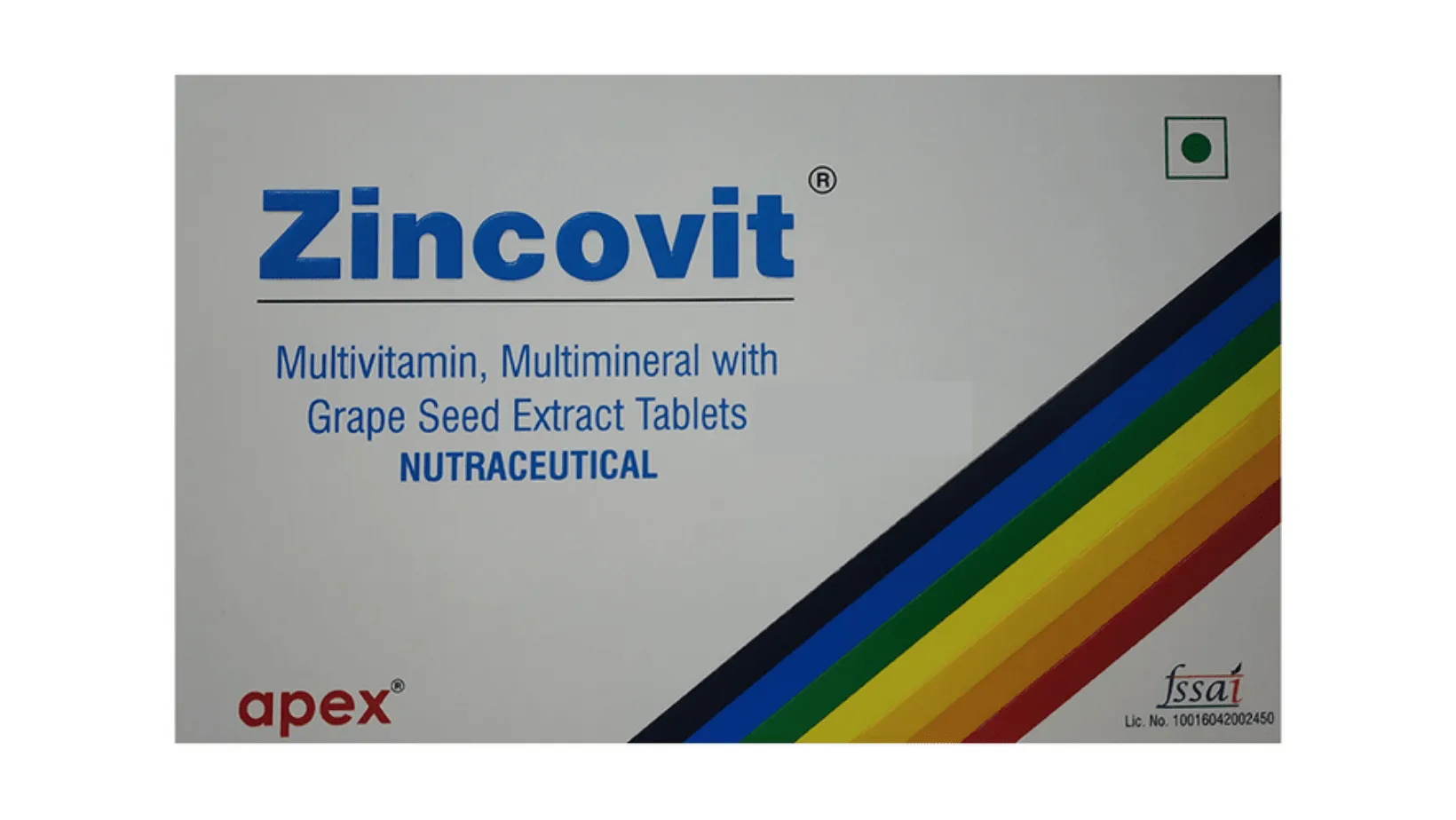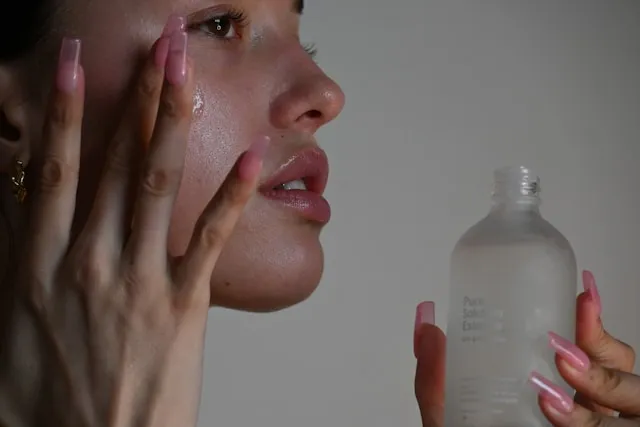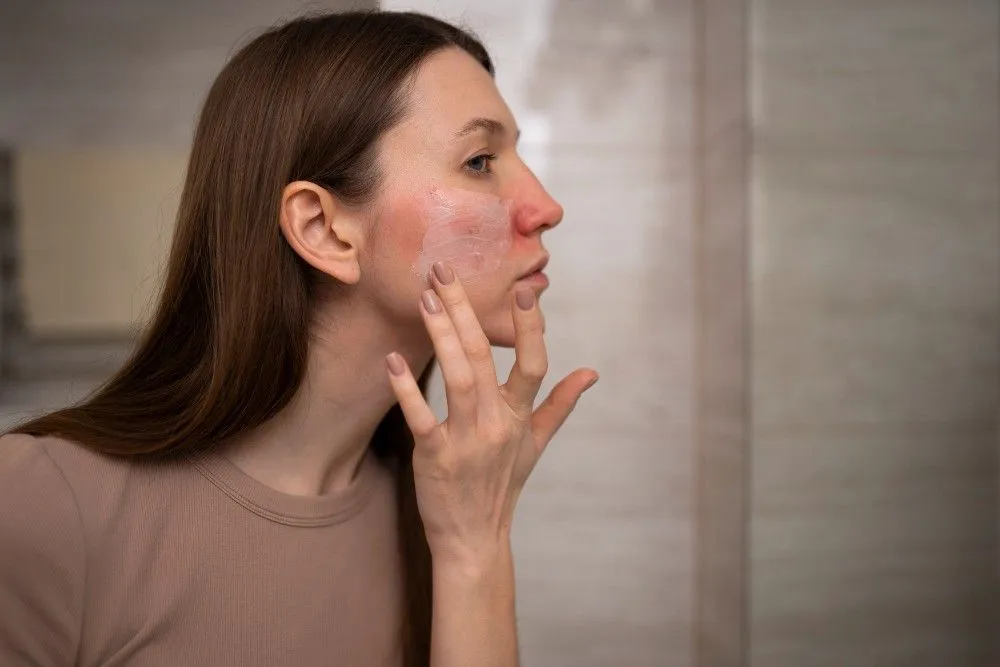Spending time under the sun can feel refreshing—until your skin and body say otherwise. If you've ever ended up feeling sick after a long day outside, it could be more than just a regular sunburn. You might be dealing with sun poisoning, a severe and often misunderstood reaction to sun exposure.
But how to know if you have sun poisoning or just a bad burn? In this blog, we’ll help you understand the clear signs, causes, who’s at risk, and how to manage it before it turns serious.
What Exactly Is Sun Poisoning? Is It the Same as a Bad Sunburn?
Sun poisoning, though not a formal medical term, is commonly used to describe severe sunburn. It’s not just about red or darkened skin—it can make you feel physically ill, and in some cases, it may even trigger an allergic-type reaction to UV exposure. In some rare cases, it is referred to as an allergic reaction to sun exposure.
It generally results from prolonged exposure to the sun's ultraviolet (UV) rays. Other contributing factors include:
-
Not using sun protection, like sunscreen with a high SPF or protective clothing.
-
Having fair skin (research shows lighter skin tones are more prone to sun damage).
-
Taking certain medicines (e.g., antibiotics, acne meds, diuretics) that increase sun sensitivity.
-
Engaging in outdoor activities such as hiking and swimming without using sun protection.
-
Living in or traveling to high-altitude locations where UV rays are more intense.
How to Know If You Have Sun Poisoning? 8 Signs to Watch Out
Understanding how to identify the symptoms early is key to receiving the appropriate treatment and preventing damage to the skin. Here are the signs you might have sun poisoning:
1. Severe Redness and Swelling
-
Due to inflammation caused by excessive sun exposure, the skin becomes intensely red, and redness may spread quickly.
-
In severe situations, the inflammation can lead to swelling, or the skin may feel hot to the touch, pointing to a second-degree burn.
2. Blistering or Peeling Skin
-
Damage caused to the deepest layer of the skin by excessive UV radiation can lead to blisters filled with clear or yellow fluid.
-
After this, the skin starts peeling as the affected outer layer of the skin begins shedding to reveal new skin.
3. Fever and Chills
-
The inflammation associated with sunburn stimulates inflammatory mediators, which cause the hypothalamus (temperature regulation center of the body) to increase core body temperature, contributing to fever.
-
As the body tries to adjust to the new, increased temperature, the results can be chills or shivering, even in hot weather.
4. Pain and Tenderness
- Sun poisoning triggers inflammation, which widens blood vessels and increases blood flow—leading to pain and tenderness.
-
Also, blisters formed due to excessive sunburn can further raise the pain and tenderness.
5. Dehydration
-
Rupturing of blisters caused by sun poisoning can release fluids, which are lost from the skin through the evaporation process, leading to dehydration.
-
Sun poisoning can also contribute to electrolyte imbalances due to loss of essential minerals through skin and frequent urination, which also leads to dehydration.
6. Headache and Dizziness
-
Dehydration caused by severe sunburn can lead to extreme loss of fluids through sweating, as the body draws fluid to the affected area to cool it down, triggering headache and dizziness.
-
Moreover, long sun exposure can lead to heat exhaustion, the mild form of heat-related illness, which can also cause headache and dizziness.
7. Nausea and Vomiting
-
Severe sunburn can lead to dehydration, which results in nausea and vomiting as the body finds it challenging to maintain proper bodily function.
-
In addition, it triggers inflammation in the body, which affects several systems, including the digestive system, contributing to nausea and vomiting.
8. Rash or Itchy Bumps
-
Prolonged sun exposure can lead to rashes called Polymorphic Light Eruption (PMLE), which appear as itchy and red bumps, especially in people who have sun sensitivity and certain skin conditions.
-
Moreover, inflammation caused by UV radiation can cause irritation in the nerve endings, which contribute to itchiness.
How to Tell Whether It's Sun Rash, Sunburn, or Sun Poisoning?
Understanding the difference between sun rash, sunburn, and sun poisoning is crucial to receive proper treatment and prevent severe skin issues. So, here learn how these problems differ in terms of symptoms, causes, onset (beginning of symptoms), and severity.
Sunburn vs. Sun Poisoning
|
Aspect |
Sunburn |
Sun Poisoning |
|---|---|---|
|
Symptoms |
Red, painful skin, itchiness, mild swelling, warm to the touch, and peeling after some days |
Severe red or blistered skin, headache, fatigue, fever, chills, dehydration, nausea, or dizziness or dehydration |
|
Cause |
Excessive exposure to UV radiation, damaging the outer skin layers |
Prolonged sun exposure leading to severe sunburn and systemic allergic reaction |
|
Onset |
Develops within a few hours after sun exposure and peaks in 24 to 48 hours. |
Might start during or immediately after long sun exposure |
|
Severity |
Mild to moderate, and basically heals within some days with home treatments |
More severe, and requires medical treatment |
Heat Rash vs. Sun Poisoning
|
Aspect |
Heat Rash |
Sun Poisoning |
|---|---|---|
|
Symptoms |
Tiny clear or red bumps, mild redness, and itching or a prickling-like feeling |
Severe red or blistered skin, headache, fatigue, fever, chills, dehydration, nausea, or dizziness or dehydration |
|
Cause |
Trapping of the sweat under the skin, especially in hot and humid weather |
Prolonged sun exposure leading to severe sunburn and systemic allergic reaction |
|
Onset |
Develops rapidly after excessive sweating or being in a hot and humid place |
Might start during or immediately after long sun exposure |
|
Severity |
Usually mild and subsides with a cold compress and rest. |
More severe, and requires medical treatment |
Sunstroke vs. Sun Poisoning
|
Aspect |
Sunstroke |
Sun Poisoning |
|---|---|---|
|
Symptoms |
Hot and dry skin (no sweating), fever (above 104°F), rapid pulse, confusion, unconsciousness, or fainting |
Severe red or blistered skin, headache, fatigue, fever, chills, dehydration, nausea, or dizziness or dehydration |
|
Cause |
Long exposure to high temperatures and strenuous physical activity in the heat |
Prolonged sun exposure leading to severe sunburn and systemic allergic reaction |
|
Onset |
Quick or slow, frequently during or after physical activities, especially in hot weather |
Might start during or immediately after long sun exposure |
|
Severity |
Life-threatening emergency that needs immediate medical attention |
More severe, and requires medical treatment |
Who is at Risk for Sun Poisoning?
Sun poisoning can affect anyone, but certain individuals are more vulnerable:
Higher Risk Groups:
-
People with fair or light skin
-
Babies and children with sensitive skin
-
Those with skin conditions (e.g., eczema, lupus)
-
Individuals taking medications like antibiotics, diuretics, and blood pressure drugs
-
Outdoor workers or residents in high altitudes with strong UV exposure
-
Those with a personal or family history of skin cancer
Risky Lifestyle Factors:
-
Spending long hours outdoors, especially between 10 a.m. to 4 p.m.
-
Skipping sunscreen or wearing unprotected clothing
-
Being near reflective surfaces like water, sand, or snow
-
Using indoor tanning beds, which expose the skin to concentrated UV rays
What You Can Do at Home (Self-Treatment for Sun Poisoning)
In most cases, the symptoms related to sun poisoning can be managed at home. The first step is to avoid going out in the sun until the symptoms subside. Other home treatment options include:
-
Cold compress: Applying a cold compress or ice pack can relieve pain and discomfort in the affected area.
-
Aloe vera gel: The soothing and hydrating effects of this gel can relieve discomfort and restore moisture in the affected area.
-
Hydration: Drink plenty of water to manage dehydration, which is one of the primary symptoms associated with sun poisoning.
-
Cool colloidal oatmeal bath: Mixing one cup of colloidal oats in the bath can alleviate irritation and sunburn and retain the natural moisture of the skin.
-
Anti-inflammatory pain relievers: Examples include ibuprofen or acetaminophen, which can help reduce pain.
-
Fragrance-free moisturizer: Applying the moisturizer to the irritated area can soothe the skin.
-
Avoid tight clothes: This can help avoid further irritation in the affected skin area.
If in case you have blisters:
-
Clean the area gently using lukewarm water and mild soap.
- Don’t burst them; if they do break, apply petroleum jelly.
-
Avoid corticosteroid creams like cortisone—they can delay healing.
-
Drink plenty of water to maintain hydration.
How Long Does Sun Poisoning Last?
This depends on the severity:
-
Mild cases: 2 to 3 days with proper care
-
Moderate cases: for up to 1 week
-
Severe cases: Several weeks—may require medical intervention
If any symptom does not improve in a few days or worsens, see a doctor immediately. If repeated sun poisoning is left untreated, it can lead to complications, like:
-
Premature skin aging
-
High risk of skin cancer, and research says melanoma shows a greater link to intense sunburns
-
Eye damage
-
Precancerous skin lesions
-
Scarring
When to Seek Medical Help?
Don’t delay professional care if you experience:
-
Blisters over large areas of the body
-
Severe peeling or open sores
-
Signs of infection (pus, spreading redness, extreme pain)
-
Fever above 101°F
-
Severe dehydration with symptoms, like dry skin, extreme thirst, and confusion
-
Trouble breathing or persistent dizziness
-
Recurring sun sensitivity episodes
Doctors may evaluate your condition through physical exams, medical history, and necessary lab tests.
Medical Treatment for Sun Poisoning
Dermatologists or emergency physicians may recommend:
-
Intravenous (IV) fluids to manage dehydration and electrolyte imbalance
-
Steroid creams to relieve painful blistering sunburns
-
Oral steroids for relieving intense swelling and inflammation
-
Prescription pain medications, like prednisone, if OTC medicines don't show any relief in pain and inflammation
-
Topical antibiotics to prevent or treat the infection
In extreme cases of skin burns or damage, you may be treated in a burn or wound center.
Preventive Tips for Sun Poisoning
To protect yourself from sun poisoning, follow these steps:
-
Apply broad-spectrum with SPF 30+ sunscreen to your face and body every 2 hours daily.
-
Wear UV-blocking sunglasses, wide-brimmed hats, and long-sleeved clothes when outdoors.
-
Minimize direct sun exposure, particularly between 10 a.m.-4 p.m.
-
Drink a lot of water to keep your skin and body well-hydrated, especially during outdoor activities.
-
Be careful near water, snow, and sand, which reflect more UV rays.
-
Avoid indoor tanning beds, as they reflect strong UV radiation.
-
Be mindful if on sun-sensitizing medications (check with your doctor).
Final Thoughts
How to know if you have sun poisoning may be your concern if you’ve been out in the sun for too long. Symptoms like redness, swelling, fever, blisters, and dehydration shouldn’t be ignored. While mild cases may resolve with self-care, severe symptoms demand medical help.
The best treatment? Prevention. Use sunscreen, stay hydrated, and protect your skin with clothing. Listen to your body—especially when it’s telling you the sun has done more harm than good.
Frequently Asked Questions
Is sun poisoning dangerous?
Yes, it can be dangerous than a regular sunburn, leading to life-threatening complications like premature aging, scarring, eye damage, or skin cancer if left untreated.
What is the fastest way to get rid of sun poisoning?
For fastest relief, move out of the sun, stay hydrated, take pain medications, and cool down the skin.
Can people with dark skin get sun poisoning?
Yes, they can. But the chances are low as they have higher melanin content that protects against sunburn.
What can be mistaken for sun poisoning?
Polymorphous light eruption is confused with sun poisoning, as it is an allergic reaction that also causes red, itchy, and bumpy rashes similar to sunburn.
Can too much sun exposure make you feel sick?
Yes, excessive UV rays can cause skin inflammation, which can make you feel sick by causing sun allergy rashes, heat cramps, heat stroke, and heat exhaustion.
Reviewed by







